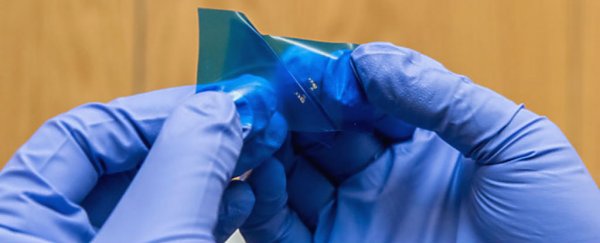Physicists have been testing the properties of new 2D quantum materials that could usurp graphene as the 'wonder materials' of the future.
These materials, which can conduct electricity at nearly the speed of light, could replace silicon in the next generation of hyper-speed computers. One could even form the basis of a new "exotic superconductor" that could actually break time-reversal symmetry - or reverse the flow of time.
"Finally, we can take exotic, high-end theories in physics and make something useful," says one of the researchers, Jing Xia, from the University of California, Irvine.
"We're exploring the possibility of making topological quantum computers [which are currently theoretical] for the next 100 years."
Xia and his team, along with researchers from several universities across the US and China, have been investigating the potential of a handful of quantum materials that could revolutionise computing in the coming decades.
The results have been described in three papers that have simultaneously been published in Nature, Science Advances, and Nature Materials.
Of particular interest were materials that display both electronic and magnetic properties - something that's required in computer memory and storage systems.
Graphene - two-dimensional sheets of carbon atoms that are super flexible, harder than diamond, and stronger than steel - has shown crazy amounts of potential in terms of conductivity, but one major drawback in terms of computing is the fact that it's not magnetic.
That's where another two-dimensional cousin - chromium germanium telluride (CGT) - comes in.
Using what Xia calls the most sensitive magnetic microscope in the world - the fibre-optic Sagnac interferometer - the team observed a microscopic flake of CGT measuring just two atoms thick, several microns long, and a few microns across.
To put that into perspective, the width of a single human hair ranges from approximately 17 to 180 microns.
At temperatures of -233 degrees Celsius (-387 degrees Fahrenheit) the team was able to confirm and measure CGT's magnetic properties.
This finally answers the decades-old question in quantum physics of whether magnetism could survive in materials that have been shrunk down to two dimensions.
"This is an exciting discovery," says researcher Xiang Zhang from the University of California, Berkeley, who also studied the material.
"This experiment presents smoking-gun evidence for an atomically thin - and atomically flat - magnet, which surprised many people."
Together with its ability to conduct electricity in the form of Dirac and Majorana fermions - particles without mass that move at nearly the speed of light - instead of the electrons in today's computers, the material has now proved itself worthy of great scientific interest.
Another new quantum material that's been under the microscope is a mixture of bismuth and nickel - when researchers brought the two into contact at very low temperatures (-269 degrees Celsius or -452 degrees Fahrenheit) they found "an exotic superconductor that breaks time-reversal symmetry".
Also referred to as T-symmetry, time-reversal symmetry relates to the ability to effectively reverse the flow of time.
"Imagine you turn back the clock and a cup of red tea turns green. Wouldn't that make this tea very exotic? This is indeed exotic for superconductors," says Xia.
"And it's the first time it's been observed in 2D materials."
Now that we've gotten a glimpse of the potential of these new quantum materials, the next step will be to make them more practical for use in the revolutionary (but not yet built) quantum computers of the future.
And that means replicating these properties under much milder temperatures - something that Xia's team is well on its way to achieving, by building a device that can stabilise 2D materials at the relatively balmy temperature of -33 degrees Celsius (-27 degrees Fahrenheit).
"Believe it or not, that's hotter than some parts of Canada," Xia jokes. "This work is a big step toward developing future quantum computers at nearly room temperature."
The three papers have been published in Nature, Science Advances, and Nature Materials.
